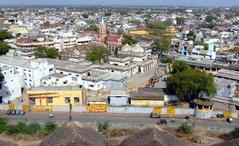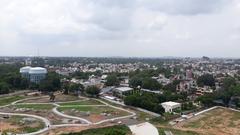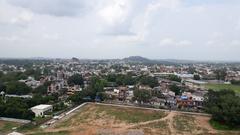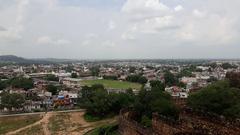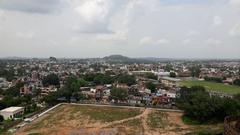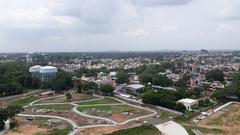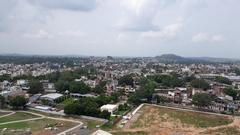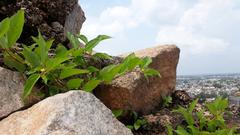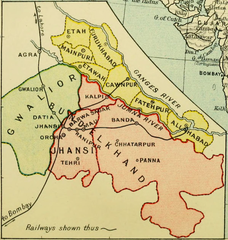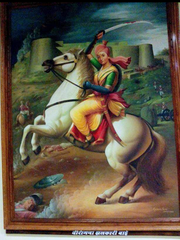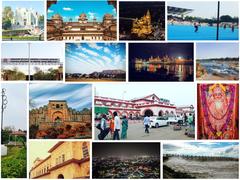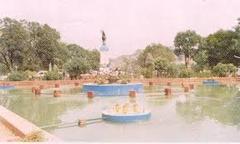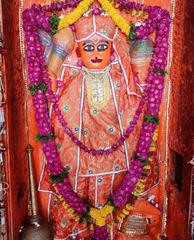
Complete Guide to Visiting St. Jude’s Shrine in Jhansi
Publication Date: 23/07/2024
Introduction to St. Jude’s Shrine
St. Jude’s Shrine in Jhansi, India, stands as a symbol of faith, history, and cultural richness. Established in the mid-20th century, the shrine is dedicated to St. Jude Thaddeus, one of the twelve apostles of Jesus Christ and the patron saint of desperate cases and lost causes. This sacred site attracts thousands of pilgrims annually, offering them a place of spiritual solace and hope. The shrine’s blend of modern and traditional architectural styles, with its imposing dome and tall bell tower, creates a visually stunning landmark that resonates with both religious and cultural significance (source).
The history of St. Jude’s Shrine is deeply intertwined with the local Catholic community’s efforts and contributions, dating back to the early 20th century. The construction of the shrine began in 1966, under the guidance of Bishop F.X. Fenech, and was completed in 1968. The shrine was consecrated on October 28, 1968, a date that coincides with the feast day of St. Jude, making it a significant event for the devotees (source).
Visitors to St. Jude’s Shrine not only find a place for prayer and meditation but also witness a hub of cultural activities and social services that benefit the local community. The shrine’s charitable initiatives in education and healthcare reflect the Christian values of compassion and service, further enhancing its role as a community center. This comprehensive guide aims to provide detailed insights into the history, significance, visitor information, and nearby attractions of St. Jude’s Shrine, ensuring a fulfilling and enriching experience for all visitors.
Contents Overview
- Introduction
- History and Significance of St. Jude’s Shrine
- Historical Background
- Architectural Significance
- Religious Significance
- Cultural Impact
- Visitor Information
- Timing
- Ticket Prices
- Dress Code
- Photography
- Offerings
- Accessibility
- Travel Tips
- Nearby Attractions
- Jhansi Fort
- Rani Mahal
- Barua Sagar
- Orchha
- Parichha Dam
- Government Museum
- FAQ
- Conclusion
Visiting St. Jude’s Shrine in Jhansi - History, Tickets, and Travel Tips
Introduction
St. Jude’s Shrine in Jhansi, India, is not just a religious site but a beacon of faith and hope. Known for its historical significance, architectural beauty, and deep-rooted cultural impact, it attracts pilgrims and tourists from all over. Whether you’re seeking spiritual solace or exploring Jhansi’s rich cultural heritage, St. Jude’s Shrine is a must-visit destination.
History and Significance of St. Jude’s Shrine
Historical Background
St. Jude’s Shrine in Jhansi, India, is a prominent Roman Catholic pilgrimage site dedicated to St. Jude Thaddeus, one of the twelve apostles of Jesus Christ. The shrine’s history dates back to the early 20th century when the Catholic community in Jhansi sought a place of worship and veneration for St. Jude, who is often invoked as the patron saint of desperate cases and lost causes. The foundation stone of the shrine was laid in 1966 by Bishop F.X. Fenech, the then Bishop of Jhansi. The construction of the shrine was completed in 1968, and it was consecrated on October 28, 1968, coinciding with the feast day of St. Jude. The shrine was built with the contributions and efforts of the local Catholic community and has since become a beacon of faith and hope for many devotees (source).
Architectural Significance
The architectural design of St. Jude’s Shrine is a blend of modern and traditional styles, reflecting the cultural and religious diversity of India. The shrine features a large, imposing structure with a prominent dome and a tall bell tower that can be seen from a distance. The interior of the shrine is adorned with beautiful stained glass windows depicting scenes from the life of St. Jude and other biblical events. The altar of the shrine is the focal point, where a statue of St. Jude is enshrined. The statue is often decorated with flowers and candles, symbolizing the prayers and offerings of the faithful. The serene and peaceful ambiance of the shrine provides a perfect setting for prayer and meditation (source).
Religious Significance
St. Jude’s Shrine holds immense religious significance for the Catholic community in Jhansi and beyond. St. Jude is revered as a powerful intercessor, and many devotees visit the shrine to seek his blessings and assistance in times of need. The shrine is particularly known for the novena prayers held every Thursday, which attract a large number of devotees. The annual feast of St. Jude, celebrated on October 28, is a major event at the shrine. The celebrations include special masses, processions, and cultural programs, drawing pilgrims from various parts of India. The feast day is marked by a sense of joy and devotion, with many testimonies of miracles and answered prayers attributed to the intercession of St. Jude.
Cultural Impact
St. Jude’s Shrine has had a significant cultural impact on the local community in Jhansi. The shrine serves as a center for various religious and social activities, fostering a sense of community and solidarity among the faithful. The shrine also plays a role in promoting interfaith dialogue and understanding, as people from different religious backgrounds visit the shrine to seek solace and peace. The shrine’s charitable activities, including educational and healthcare initiatives, have contributed to the welfare of the local community. The shrine’s outreach programs provide support to the underprivileged and marginalized sections of society, reflecting the Christian values of compassion and service (source).
Visitor Information
- Timing - The shrine is open to visitors throughout the week, with special novena prayers held every Thursday. The best time to visit is during the early morning or late afternoon to avoid the midday heat.
- Ticket Prices - There are no entrance fees to visit St. Jude’s Shrine. However, donations are welcome.
- Dress Code - Visitors are advised to dress modestly and respectfully, keeping in mind the religious nature of the shrine.
- Photography - Photography is allowed in the shrine, but visitors should be mindful of the sanctity of the place and avoid disturbing others in prayer.
- Offerings - Devotees can offer candles, flowers, and donations at the shrine. There are designated areas for lighting candles and placing offerings.
- Accessibility - The shrine is accessible to people with disabilities, with ramps and other facilities available for their convenience.
- Travel Tips - The shrine is well-connected by road and public transportation. Parking is available on-site. Visitors can also use local auto-rickshaws and taxis to reach the shrine.
Nearby Attractions
Jhansi Fort
Located approximately 3 kilometers from St. Jude’s Shrine, Jhansi Fort is a must-visit historical site. Built in the 17th century by Raja Bir Singh Deo of Orchha, the fort is a symbol of the valor and resilience of Rani Lakshmibai, the Queen of Jhansi. The fort offers panoramic views of the city and houses several temples, museums, and gardens. Visitors can explore the fort’s various sections, including the Rani Mahal, Panch Mahal, and the Baradari.
Rani Mahal
Situated about 2 kilometers from the shrine, Rani Mahal is another significant historical attraction. This palace was the residence of Rani Lakshmibai and is now a museum showcasing artifacts from the Chandela dynasty. The palace’s architecture is a blend of Rajput and Mughal styles, featuring intricate carvings and beautiful frescoes. The museum exhibits weapons, paintings, and sculptures, providing a glimpse into the rich history and culture of Jhansi.
Barua Sagar
Approximately 24 kilometers from Jhansi, Barua Sagar is a picturesque town known for its scenic beauty and historical significance. The town is named after the Barua Sagar Lake, created by Raja Udit Singh of Orchha. Visitors can enjoy boating on the lake and explore the nearby Barua Sagar Fort, which offers stunning views of the surrounding landscape. The town is also home to several ancient temples, making it a perfect destination for history and nature enthusiasts.
Orchha
Located about 18 kilometers from Jhansi, Orchha is a historic town known for its magnificent palaces, temples, and cenotaphs. The town was founded in the 16th century by Rudra Pratap Singh, a Bundela Rajput chief. Key attractions in Orchha include the Orchha Fort complex, which houses the Raja Mahal, Jahangir Mahal, and Sheesh Mahal. The town is also famous for the Chaturbhuj Temple, Ram Raja Temple, and the cenotaphs of the Bundela kings along the Betwa River. Orchha’s rich history and architectural splendor make it a popular tourist destination.
Parichha Dam
Situated around 25 kilometers from Jhansi, Parichha Dam is a popular spot for picnics and water sports. The dam is built on the Betwa River and creates a large reservoir, offering opportunities for boating, fishing, and bird watching. The serene environment and scenic beauty of the dam make it an ideal place for relaxation and recreation.
Government Museum, Jhansi
Located in the heart of Jhansi, the Government Museum is a treasure trove of artifacts and exhibits related to the region’s history and culture. The museum houses a vast collection of sculptures, weapons, manuscripts, and paintings from different periods. Notable exhibits include artifacts from the Gupta and Chandela dynasties, as well as items related to Rani Lakshmibai and the First War of Indian Independence in 1857. The museum provides valuable insights into the rich cultural heritage of Jhansi and its surrounding areas.
FAQ
- What are the visiting hours for St. Jude’s Shrine? The shrine is open from 6:00 AM to 8:00 PM daily.
- How do I buy tickets for St. Jude’s Shrine? There are no tickets required for entry. Donations are welcome.
- Are there guided tours available? Yes, the shrine occasionally offers guided tours. Check with the shrine’s administration for availability.
Conclusion
St. Jude’s Shrine in Jhansi stands as a testament to faith, hope, and community. Its rich history, architectural beauty, and religious significance make it a must-visit destination for pilgrims and tourists alike. Whether seeking spiritual solace or simply exploring the cultural heritage of Jhansi, a visit to St. Jude’s Shrine promises to be a rewarding experience.
Call to Action
For more information, you can visit the official website of St. Jude’s Shrine. Download our Audiala app for more travel tips and updates, and follow us on social media to stay connected.
Visitor Tips and Logistics for St. Jude’s Shrine - Visiting Hours, Tickets, and More
Getting There
By Air - The nearest airport to Jhansi is Gwalior Airport, approximately 103 kilometers away. From the airport, you can hire a taxi or take a bus to Jhansi. For international travelers, Indira Gandhi International Airport in New Delhi is a more viable option, located about 320 kilometers from Jhansi. From New Delhi, you can take a domestic flight to Gwalior or opt for a direct train to Jhansi.
By Train - Jhansi Junction is a major railway hub in North-Central India, well-connected to major cities like New Delhi, Mumbai, Kolkata, and Chennai. The station is about 5 kilometers from St. Jude’s Shrine. Auto-rickshaws and taxis are readily available outside the station for a quick ride to the shrine.
By Road - Jhansi is well-connected by road. National Highway 44 (NH 44) passes through the city, making it accessible from various parts of India. Buses operated by the Uttar Pradesh State Road Transport Corporation (UPSRTC) and private operators frequently ply to and from Jhansi.
Best Time to Visit
The ideal time to visit St. Jude’s Shrine is between October and March when the weather is pleasant. The summer months (April to June) can be extremely hot, with temperatures soaring above 40°C (104°F). The monsoon season (July to September) brings heavy rainfall, which might hinder travel plans.
Visiting Hours
St. Jude’s Shrine is open to visitors from 6:00 AM to 8:00 PM daily.
Entry Fees and Donations
There is no entry fee, but donations are welcome. Special masses and services are held on Sundays and during religious festivals, attracting larger crowds.
Dress Code and Etiquette
Visitors are advised to dress modestly, covering shoulders and knees, as a sign of respect. Footwear should be removed before entering the main prayer hall. Photography is generally allowed, but it is courteous to ask for permission, especially during services.
Facilities and Amenities
- Parking - Ample parking space is available near the shrine, accommodating both two-wheelers and four-wheelers.
- Restrooms - Clean and well-maintained restrooms are available for visitors.
- Shops and Eateries - Several small shops around the shrine sell religious artifacts, candles, and souvenirs. There are also eateries offering local cuisine and refreshments.
Safety Tips
- Health Precautions - Carry a basic first-aid kit and any personal medications. It is advisable to drink bottled water and avoid street food if you have a sensitive stomach.
- Personal Safety - Jhansi is generally safe for tourists, but it is always wise to stay vigilant. Avoid isolated areas after dark and keep your belongings secure.
- Emergency Contacts - Keep a list of emergency contacts handy, including local police, hospital, and your country’s embassy or consulate.
Special Events and Festivals
- Feast of St. Jude - Celebrated on October 28th, the Feast of St. Jude is a significant event at the shrine. Pilgrims from various parts of India and abroad visit the shrine to participate in special masses, processions, and prayer services.
- Christmas and Easter - These major Christian festivals are celebrated with great fervor at St. Jude’s Shrine. The church is beautifully decorated, and special services are held, attracting large congregations.
Contact Information
For any inquiries or further information, you can contact the shrine’s office at:
- Phone: +91-510-244-XXXX
- Email: [email protected]
- Address: St. Jude’s Shrine, Civil Lines, Jhansi, Uttar Pradesh, India
Useful Links
By following these tips and guidelines, visitors can ensure a smooth and enriching experience at St. Jude’s Shrine in Jhansi.
Summary and Key Takeaways
St. Jude’s Shrine in Jhansi encapsulates a unique blend of spiritual, historical, and cultural elements that make it a must-visit destination for pilgrims and tourists alike. Its rich history, architectural beauty, and religious significance draw thousands of devotees seeking solace and blessings from St. Jude Thaddeus. The shrine’s role in fostering community solidarity and promoting charitable activities further underscores its importance in the local community (source).
Visitors to the shrine can also explore the historic city of Jhansi, with its array of nearby attractions such as Jhansi Fort, Rani Mahal, and the Government Museum, each offering a glimpse into the region’s storied past. The ideal time to visit the shrine is between October and March, coinciding with the feast of St. Jude and the pleasant winter weather, making the experience both spiritually enriching and culturally immersive (source).
In conclusion, St. Jude’s Shrine stands as a testament to enduring faith and community spirit. Whether you are drawn by its religious significance, architectural splendor, or the cultural heritage of Jhansi, a visit to St. Jude’s Shrine promises to be a rewarding and memorable experience. For more information and updates, visitors are encouraged to check the official website of St. Jude’s Shrine and follow related social media channels.
Citations and Further Reading
- Visiting St. Jude’s Shrine in Jhansi - History, Tickets, and Travel Tips, 2023, Various Authors http://www.stjudesshrinejhansi.org
- Visitor Tips and Logistics for St. Jude’s Shrine - Visiting Hours, Tickets, and More, 2023, Various Authors http://www.jhansi.nic.in/tourist-place/jhansi-fort/
- Exploring St. Jude’s Shrine - Visiting Hours, Tickets, and Nearby Historical Sites in Jhansi, 2023, Various Authors http://www.jhansi.nic.in/tourist-place/rani-mahal/

